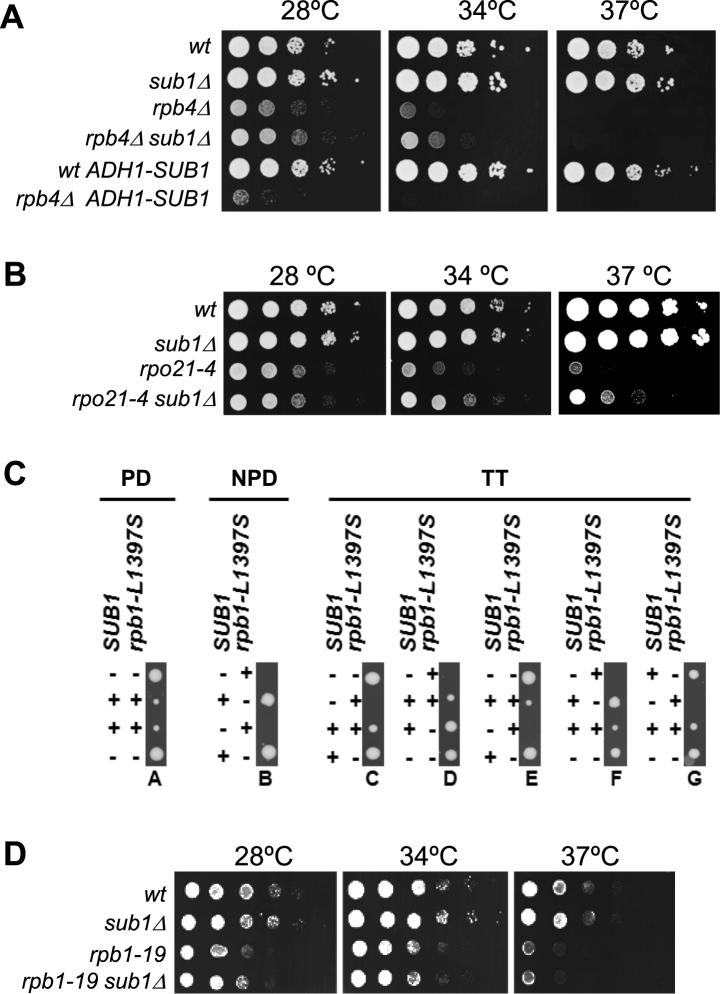Figure 2.
Allelic specific interaction between SUB1 and RPB4/7. (A) Genetic interaction between SUB1 and RPB4. SUB1 deletion partially suppresses the slow growth phenotype of the rpb4Δ strain at 28 and 34°C, while overexpression of SUB1 exacerbates it. SUB1 was overexpressed from a strong constitutive ADH1 promoter. Serial dilutions (1:10) of wt and mutant strains were spotted on selective SC media and grown for 2–3 days at the indicated temperatures. (B) Genetic interaction between SUB1 and the rpo21-4 mutation localized in the Rpb1 foot domain. Deletion of SUB1 partially suppresses the slow growth phenotype of rpo21-4 strain at 28, 34 and 37°C. Cells were assayed as in (A) in rich media. (C) sub1Δ and rpb1-L1397S are synthetically lethal. A diploid yeast strain heterozygous for both SUB1 and rpb1-L1397S was sporulated and the meiotic progeny were separated by tetrad dissection, and allowed to grow for 3 days. Forty-six tetrads were dissected, with thirty showing tetratype segregation pattern (TT, five of which are shown), nine showing paternal ditype (PD) and 7 a nonpaternal ditype (NPD). The genotype of the resulting colonies was inferred by growth or no growth on selective medium and 37°C. The sub1Δ deletion is indicated as (−), and wt (+); and in the case of RPB1, (+) means rpb1-L1397S and (−) wt. Cells deleted for rpb1-L1397S alone (− −) show a slow growth phenotype, as reported previously. Double mutants cells (− +) were unviable. (D) There is not genetic interaction between sub1Δ and the rpb1–19 mutation on the jaw domain of Rpb1. Serial dilution assay as in (B) showing that single and double mutants, rpb1–19 and rpb1-19sub1Δ respectively, display similar growth.

